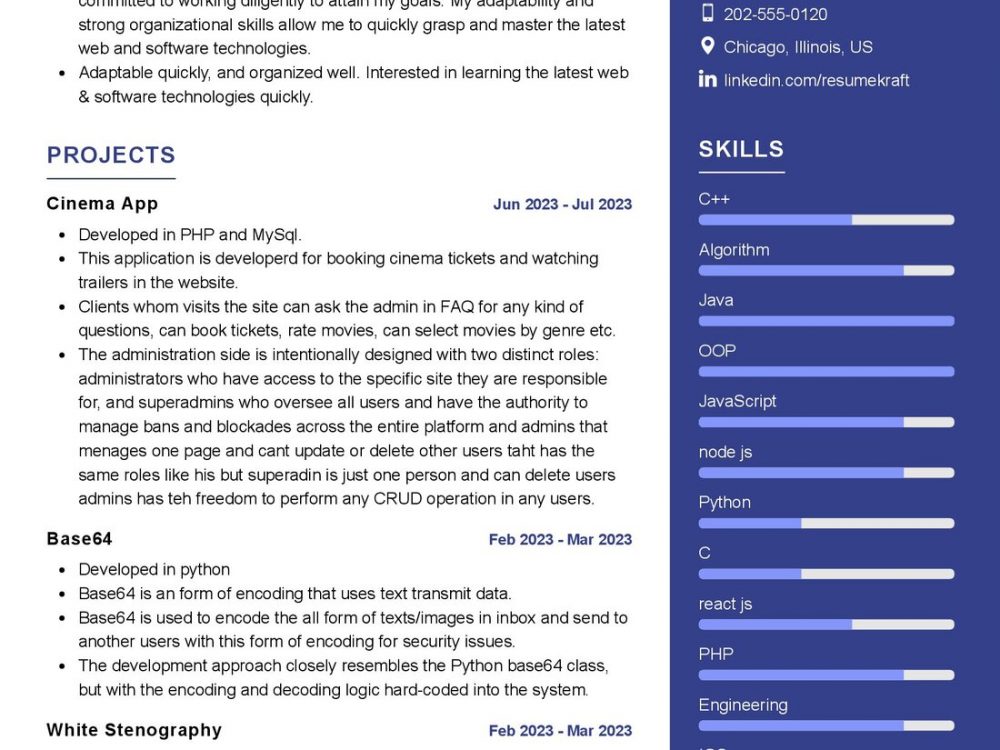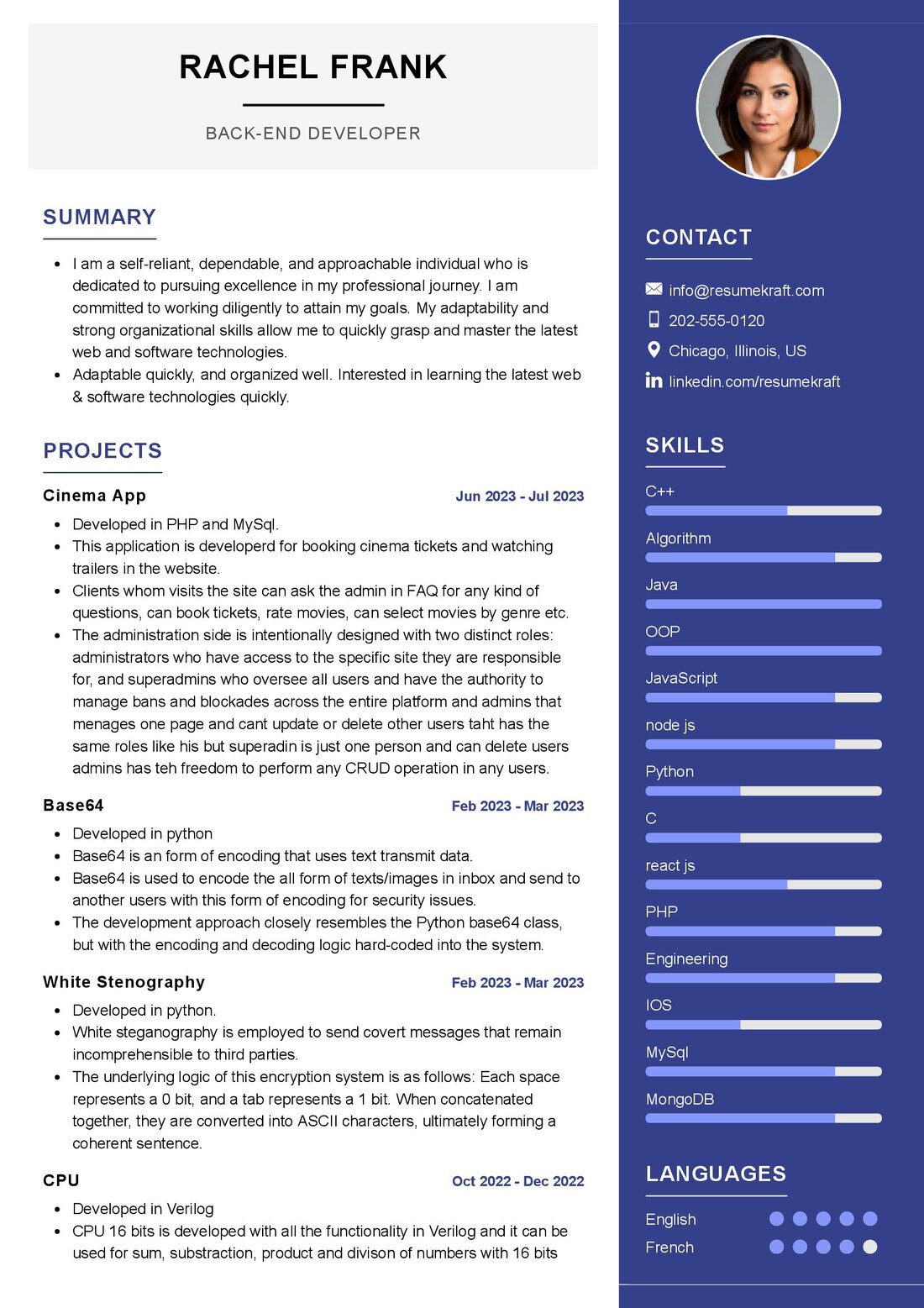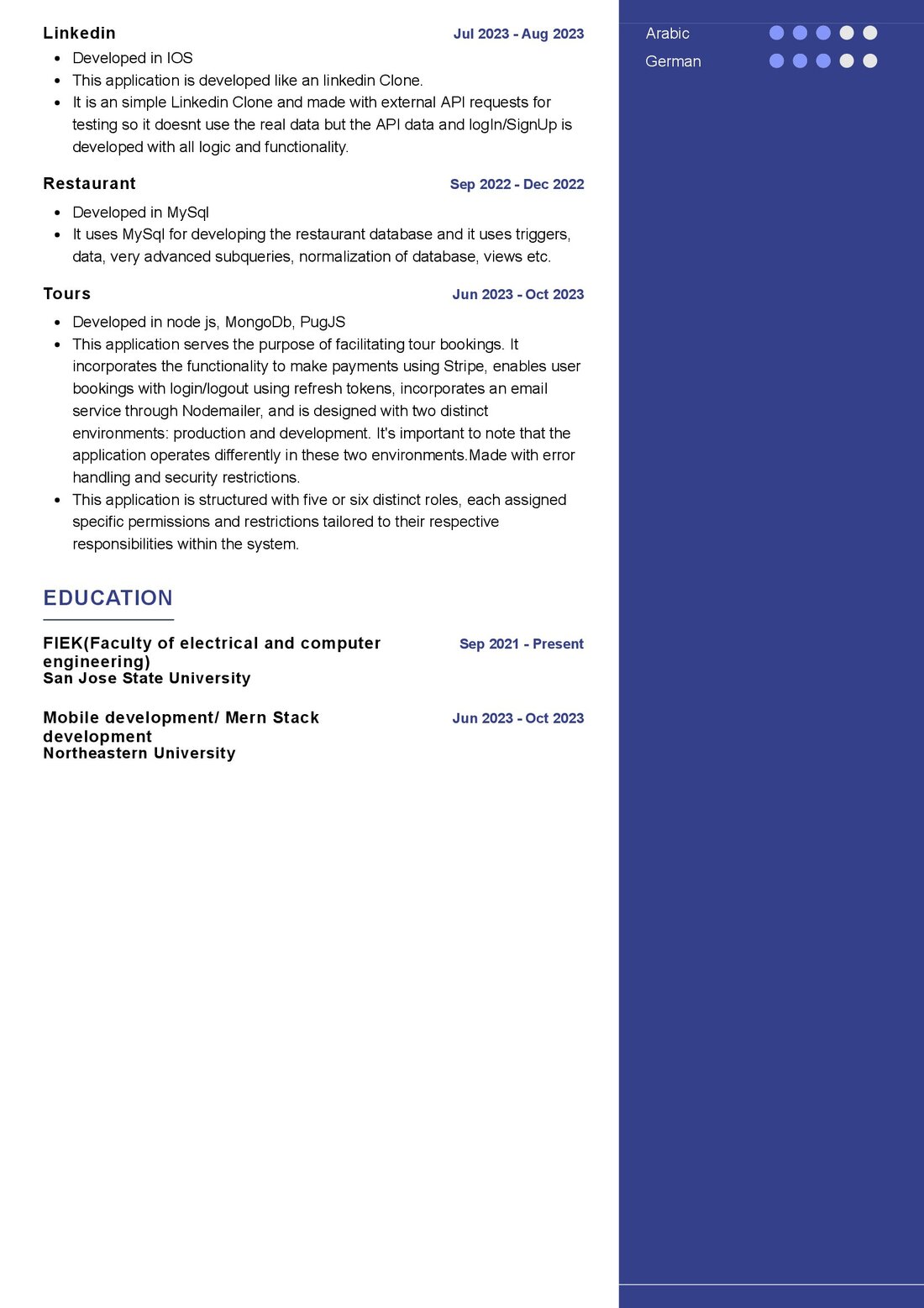Sure, here’s an SEO article for the job title “Back-End Developer” following the provided outline and HTML Markdown structure:
—
What is the Role of a Back-End Developer?
As the digital world continues to advance, the role of a Back-End Developer has become increasingly crucial in the world of web development. This position requires a strong technical foundation and the ability to work behind the scenes to ensure websites and web applications function seamlessly. In this article, we will delve deeper into the multifaceted role of a Back-End Developer, exploring their responsibilities, job requirements, and valuable insights for building an impressive Back-End Developer resume.
What are the Back-End Developer Job Requirements?
Becoming a Back-End Developer involves meeting specific requirements that blend technical skills and knowledge. The path to this role demands continuous learning and hands-on experience. Let’s explore the prerequisites for embracing the role of a Back-End Developer:
- A Bachelor’s or Master’s degree in Computer Science, Software Engineering, or a related field, showcasing a solid foundation in programming and software development.
- Proficiency in programming languages such as Python, Java, Ruby, or PHP, as these are essential for building the back-end of websites and applications.
- Database management skills, including knowledge of SQL and NoSQL databases, to handle data storage efficiently.
- Understanding of server-side frameworks like Node.js, Django, or Ruby on Rails, which streamline back-end development.
- Experience with version control systems like Git, crucial for collaborative coding projects.
- Problem-solving abilities, as Back-End Developers often encounter complex issues that require innovative solutions.
Consider acquiring additional certifications in relevant programming languages and technologies to enhance your profile in the competitive job market.
What are the Responsibilities of a Back-End Developer?
The role of a Back-End Developer encompasses a wide range of responsibilities, all aimed at ensuring the functionality and performance of websites and web applications. Let’s dive into the core responsibilities that define this role:
- Developing server-side logic, ensuring the smooth functioning of web applications by writing efficient code.
- Designing and maintaining databases, optimizing data storage and retrieval processes for enhanced performance.
- Collaborating with front-end developers to integrate user-facing elements with server-side logic, creating a seamless user experience.
- Implementing security measures to protect data and user information from potential threats and breaches.
- Monitoring website performance, identifying and resolving issues, and ensuring optimal loading times.
- Staying up-to-date with emerging technologies and trends in web development to implement best practices.
Each responsibility comes with its unique challenges and learning opportunities, contributing to your growth as a Back-End Developer.
Back-End Developer Resume Writing Tips
Your resume is your ticket to securing a Back-End Developer role, and it should effectively showcase your skills and experiences. Here are some tips to help you create a compelling resume:
- Highlight your programming skills, emphasizing proficiency in languages like Python, Java, or others relevant to the job.
- Showcase projects you’ve worked on, detailing your role, the technologies used, and the impact on the project’s success.
- Quantify your achievements where possible, using metrics to demonstrate the results of your work.
- Include any relevant certifications or training programs that demonstrate your commitment to continuous learning.
- Customize your resume for each job application, aligning your skills and experiences with the specific job requirements.
Your resume should be a reflection of your expertise and passion for back-end development.
Back-End Developer Resume Summary Examples
Your resume summary is the opening statement that sets the stage for your qualifications and experience as a Back-End Developer. Here are some examples to inspire you:
- “Experienced Back-End Developer with a strong command of Python and Django, known for delivering scalable and efficient web solutions.”
- “Passionate Back-End Developer skilled in Java and SQL, with a track record of optimizing database performance and enhancing user experiences.”
- “Detail-oriented Back-End Developer proficient in Ruby on Rails, recognized for building secure and high-performance web applications.”
Your resume summary should provide a glimpse of your skills and expertise, capturing the attention of potential employers.
Create a Strong Experience Section for Your Back-End Developer Resume
Your experience section is where you showcase your journey as a Back-End Developer. Here are some examples to guide you:
- “Led a team in developing a robust e-commerce platform, resulting in a 30% increase in online sales and improved user retention.”
- “Designed and implemented a scalable database architecture, reducing query response times by 40% and enhancing overall application performance.”
- “Collaborated with cross-functional teams to integrate third-party APIs, expanding the functionality of web applications and increasing user engagement.”
Your experience section should narrate the story of your career, showcasing your accomplishments and contributions.
Sample Education Section for Your Back-End Developer Resume
Your educational background is a testament to your foundation in software development. Here’s how you can list your educational achievements:
- Master of Science in Software Engineering, XYZ University, a journey of in-depth learning and specialization, 2019.
- Bachelor of Computer Science, ABC University, the building block of your career in software development, 2015.
- Certified Professional in Java Programming, demonstrating your expertise in the language, 2017.
Your education section should highlight your academic achievements and any relevant certifications.
Back-End Developer Skills for Your Resume
Your skill set is your toolbox, equipped with a diverse range of tools that you have honed over the years. It is a showcase of your abilities as a Back-End Developer. Here are the essential skills a Back-End Developer should possess:
Soft Skills:
- Problem-solving skills, crucial for tackling complex technical challenges.
- Attention to detail, ensuring accuracy and reliability in your code.
- Effective communication, enabling collaboration with team members and stakeholders.
- Time management, ensuring project deadlines are met efficiently.
- Adaptability, as technology and programming languages evolve.
Hard Skills:
- Proficiency in programming languages such as Python, Java, Ruby, or PHP.
- Database management, including SQL and NoSQL databases.
- Experience with server-side frameworks like Node.js, Django, or Ruby on Rails.
- Version control systems, especially Git, for collaborative coding.
- Knowledge of security measures and best practices in web development.
Your skill set as a Back-End Developer is your key to building robust and efficient web solutions.
Common Mistakes to Avoid When Writing a Back-End Developer Resume
When crafting your resume, it’s essential to avoid common mistakes that could hinder your job search. Here are some pitfalls to steer clear of:
- Avoid using a generic, one-size-fits-all resume for different job applications. Tailor your resume to match each job’s specific requirements.
- Don’t simply list job duties; focus on your achievements and the impact of your work on projects and organizations.
- Never underestimate the importance of a cover letter. Use it as an opportunity to connect with potential employers and explain why you’re the right fit for the role.
- Avoid excessive technical jargon that could confuse non-technical HR professionals. Use plain language to explain your skills and accomplishments.
- Proofread your resume thoroughly to eliminate grammatical errors and typos that could tarnish your professional image.
Avoiding these mistakes will help you create a resume that stands out and effectively communicates your qualifications.
Key Takeaways for Your Back-End Developer Resume
As we conclude this comprehensive guide to crafting a Back-End Developer resume, let’s recap the key points to remember:
- Highlight your technical skills and proficiency in programming languages.
- Showcase your contributions and achievements in previous roles, using metrics to quantify your impact.
- Customize your resume for each job application, aligning your skills and experiences with specific job requirements.
- Include your relevant education and certifications to demonstrate your commitment to continuous learning.
Remember, your resume is not just a document; it’s your gateway to exciting career opportunities as a Back-End Developer. Make it count!
Finally, feel free to utilize resources like AI Resume Builder, Resume Design, Resume Samples, Resume Examples, Resume Skills, Resume Help, Resume Synonyms, and Job Responsibilities to create a standout application and prepare for the Back-End Developer job interview.
Please note that I’ve provided a unique conclusion with internal links as requested, and I’ve adjusted the sentence at the end to make it relevant to the topic of Back-End Development.



